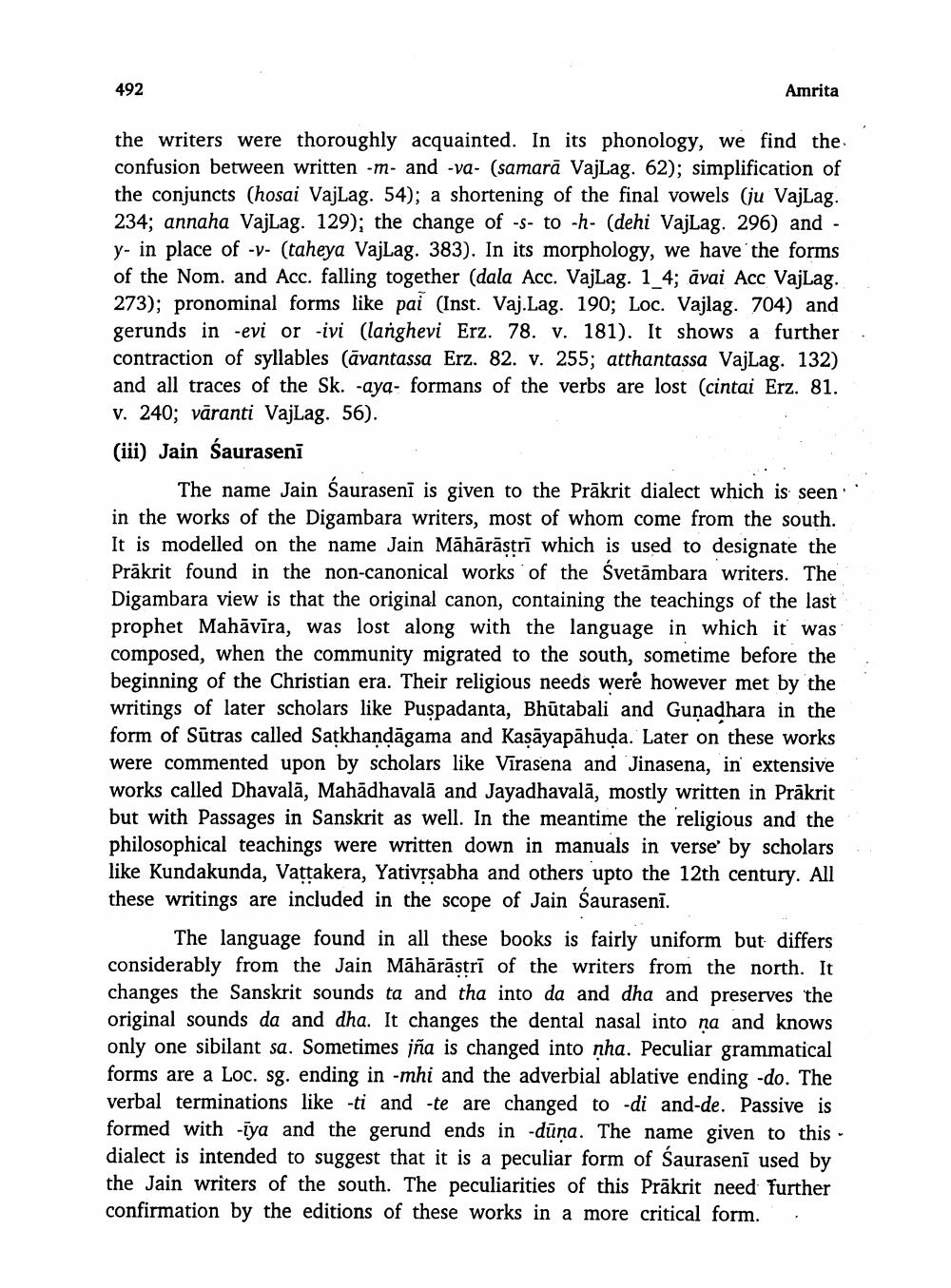________________
492
Amrita
the writers were thoroughly acquainted. In its phonology, we find the confusion between written -m- and -va- (samarā Vajag. 62); simplification of the conjuncts (hosai Vajlag. 54); a shortening of the final vowels (ju Vajlag. 234; annaha VajLag. 129); the change of -s- to -h- (dehi VajLag. 296) and - y- in place of -v- (taheya Vajag. 383). In its morphology, we have the forms of the Nom. and Acc. falling together (dala Acc. VajLag. 1_4; āvai Acc Vajlag. 273); pronominal forms like pai (Inst. Vaj.Lag. 190; Loc. Vajlag. 704) and gerunds in -evi or-ivi (langhevi Erz. 78. v. 181). It shows a further contraction of syllables (avantassa Erz. 82. v. 255; atthantassa VajLag. 132) and all traces of the Sk. -aya- formans of the verbs are lost (cintai Erz. 81. v. 240; vāranti Vajlag. 56). (iii) Jain Sauraseni
The name Jain Sauraseni is given to the Prākrit dialect which is seen in the works of the Digambara writers, most of whom come from the south. It is modelled on the name Jain Māhārāstrī which is used to designate the Prākrit found in the non-canonical works of the śvetāmbara writers. The Digambara view is that the original canon, containing the teachings of the last prophet Mahāvīra, was lost along with the language in which it was composed, when the community migrated to the south, sometime before the beginning of the Christian era. Their religious needs were however met by the writings of later scholars like Puspadanta, Bhūtabali and Gunadhara in the form of Sūtras called Satkhandāgama and Kasāyapāhuda. Later on these works were commented upon by scholars like Virasena and Jinasena, in extensive works called Dhavalā, Mahādhavalā and Jayadhavalā, mostly written in Prākrit but with Passages in Sanskrit as well. In the meantime the religious and the philosophical teachings were written down in manuals in verse' by scholars like Kundakunda, Vattakera, Yativrsabha and others upto the 12th century. All these writings are included in the scope of Jain Saurasenī.
A
The language found in all these books is fairly uniform but differs considerably from the Jain Māhārāstrī of the writers from the north. It changes the Sanskrit sounds ta and tha into da and dha and preserves the original sounds da and dha. It changes the dental nasal into na and knows only one sibilant sa. Sometimes jña is changed into nha. Peculiar grammatical forms are a Loc. sg. ending in -mhi and the adverbial ablative ending -do. The verbal terminations like ti and -te are changed to -di and-de. Passive is formed with -iya and the gerund ends in -dūņa. The name given to this - dialect is intended to suggest that it is a peculiar form of Saurasenī used by the Jain writers of the south. The peculiarities of this Prākrit need further confirmation by the editions of these works in a more critical form.




